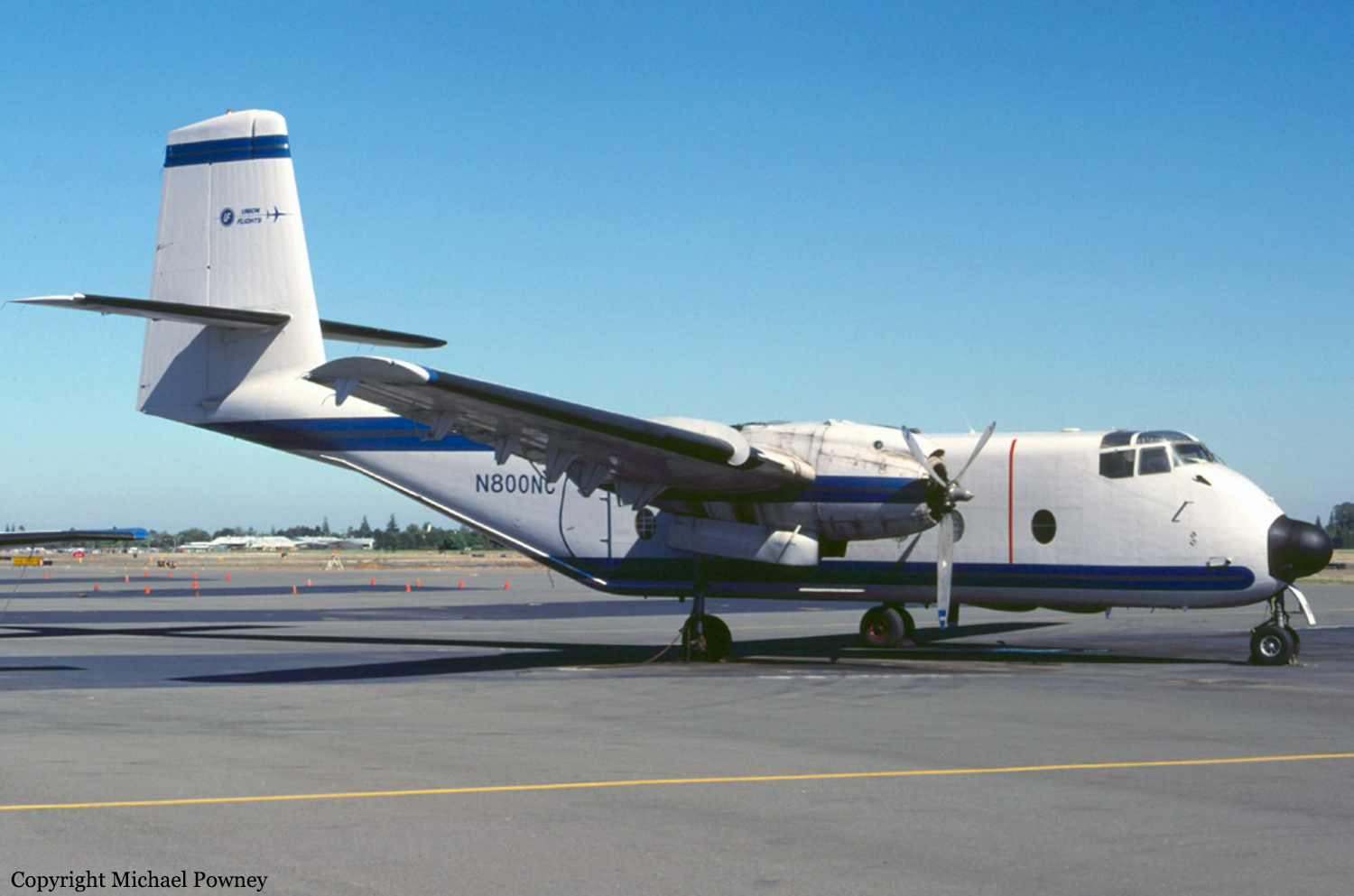Country
Crash of a De Havilland DHC-4T Caribou near Ilaga: 4 killed
Date & Time:
Oct 31, 2016 at 0830 LT
Registration:
PK-SWW
Survivors:
No
Schedule:
Timika - Ilaga
MSN:
303
YOM:
1972
Crew on board:
4
Crew fatalities:
Pax on board:
0
Pax fatalities:
Other fatalities:
Total fatalities:
4
Captain / Total hours on type:
38.00
Copilot / Total hours on type:
17
Aircraft flight hours:
2748
Aircraft flight cycles:
5953
Circumstances:
A DHC-4 Caribou aircraft, registered PK-SWW was being operated by Perkumpulan Penerbangan Alfa Indonesia, on 31 October 2016 on an unscheduled cargo flight from Moses Kilangin Airport Timika, with intended destination to Kaminggaru Aerodrome, Ilaga Papua. On board on this flight was 4 persons consisted of two pilots, one company engineer and one flight operation officer. At 2257 UTC, the aircraft departed Timika with intended cruising altitude of 12,500 feet and estimated time of arrival Ilaga at 2327 UTC. At 2323 UTC, the pilot made initial contact with Ilaga Aerodrome Flight Information Services (AFIS) officer and reported that the aircraft position was at Ilaga Pass and informed the estimate time of arrival Ilaga would be on 2327 UTC. Ilaga Aerodrome Flight Information Services (AFIS) officer advised to continue descend to circuit altitude and to report when position on downwind. At 2330 UTC, the AFIS officer called the pilot and was not replied. The AFIS officer asked pilot of another aircraft in the vicinity to contact the pilot of the DHC-4 Caribou aircraft and did not reply. At 0020 UTC, Sentani Aeronautical Information Service (AIS) officer declared the aircraft status as ALERFA. At 0022 UTC, Timika Tower controller received information from a pilot of an aircraft that Emergency Locator Transmitter (ELT) signal was detected approximately at 40 – 45 Nm with radial 060° from TMK VOR (Very High Frequency Omni Range) or approximately at coordinate 4°7’46” S; 137°38’11” E. This position was between Ilaga Pass and Jila Pass. At 0053 UTC, the aircraft declared as DETRESFA. On 1 November 2016, the aircraft wreckage was found on a ridge of mountain between Ilaga Pass and Jila Pass at coordinate 4°5’55.10” S; 137°38’47.60” E with altitude approximately of 13,000 feet. All occupants were fatally injured and the aircraft destroyed by impact force.
Probable cause:
Controlled flight into terrain.
Final Report:
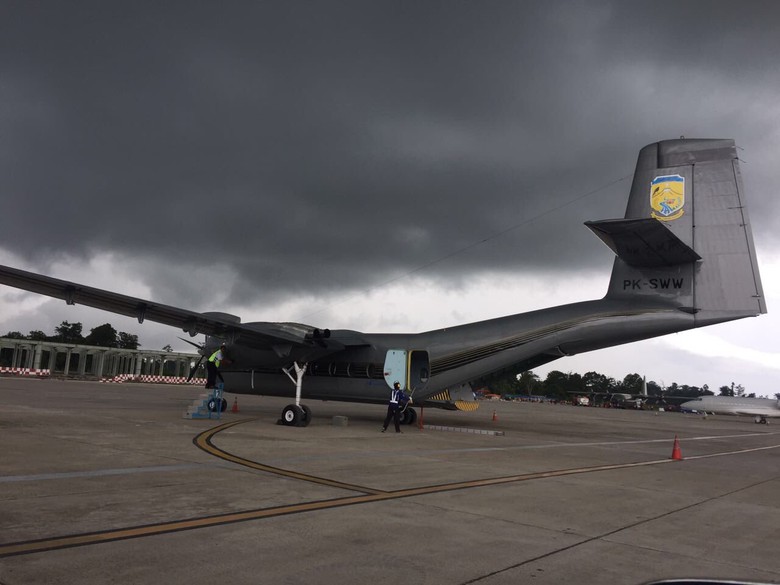
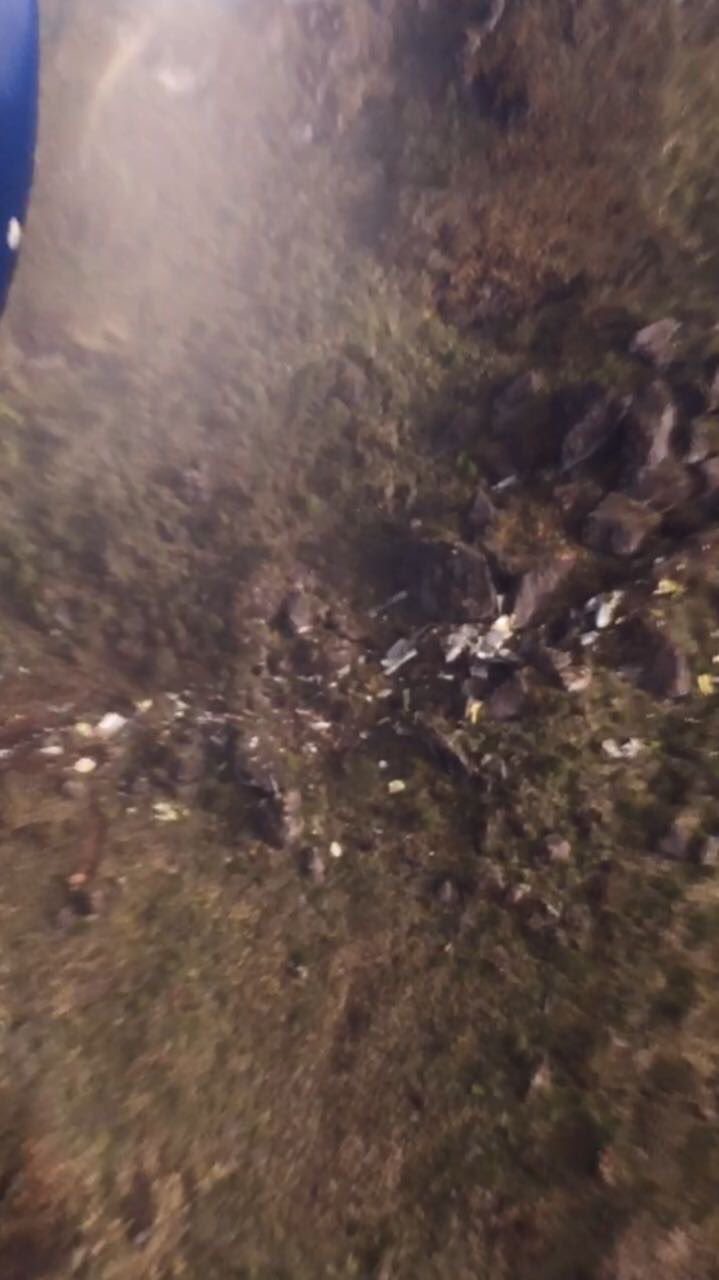
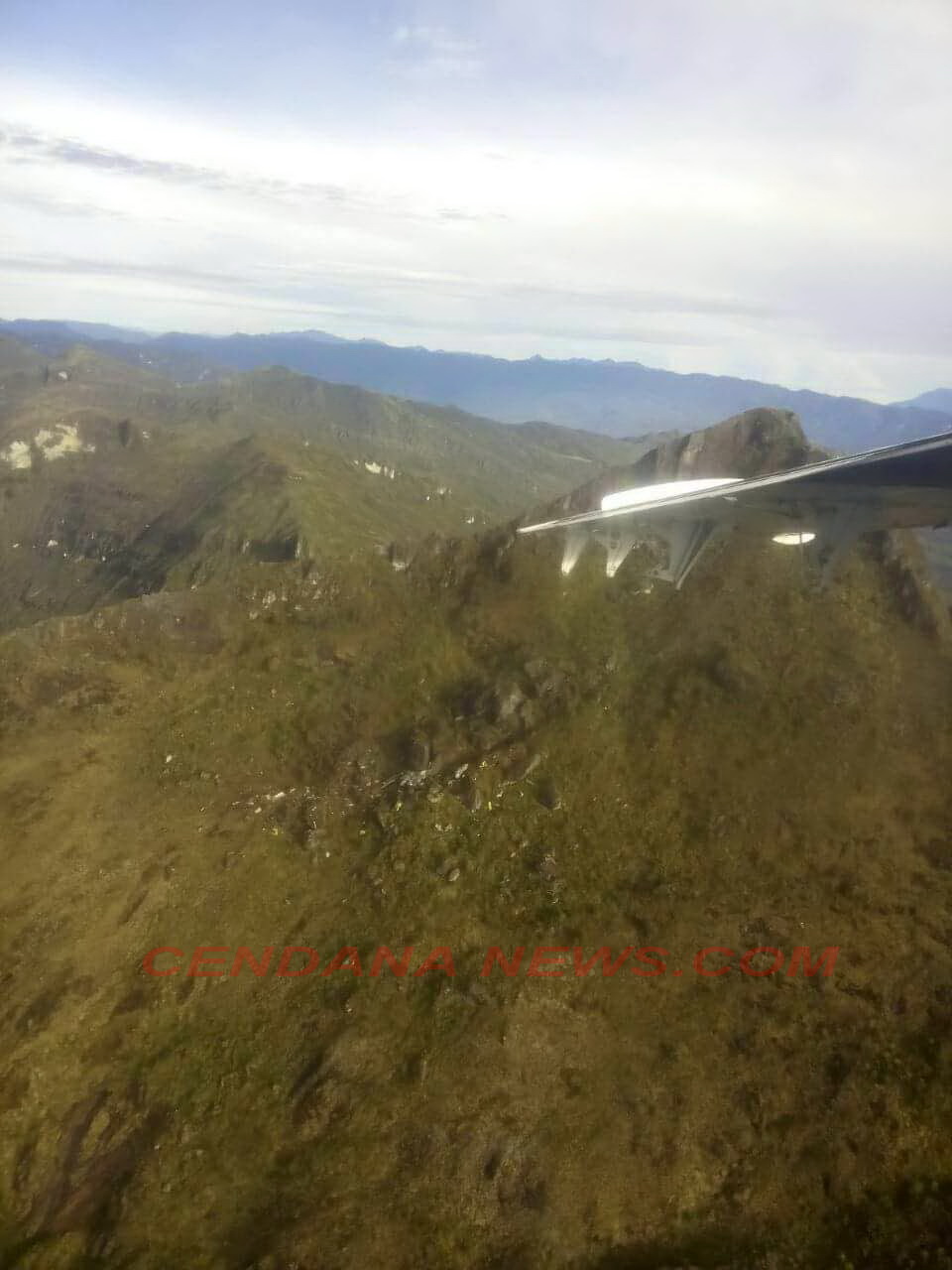
Crash of a De Havilland DHC-4 Caribou in Mamit
Date & Time:
Oct 10, 2006 at 1400 LT
Registration:
PK-YRO
Survivors:
Yes
Schedule:
Mulia – Mamit – Wamena
MSN:
24
YOM:
1960
Crew on board:
5
Crew fatalities:
Pax on board:
0
Pax fatalities:
Other fatalities:
Total fatalities:
0
Circumstances:
After landing on wet gravel runway 11/29, the aircraft veered off runway and came to rest in a wooded area, broken in two. All five occupants escaped uninjured.
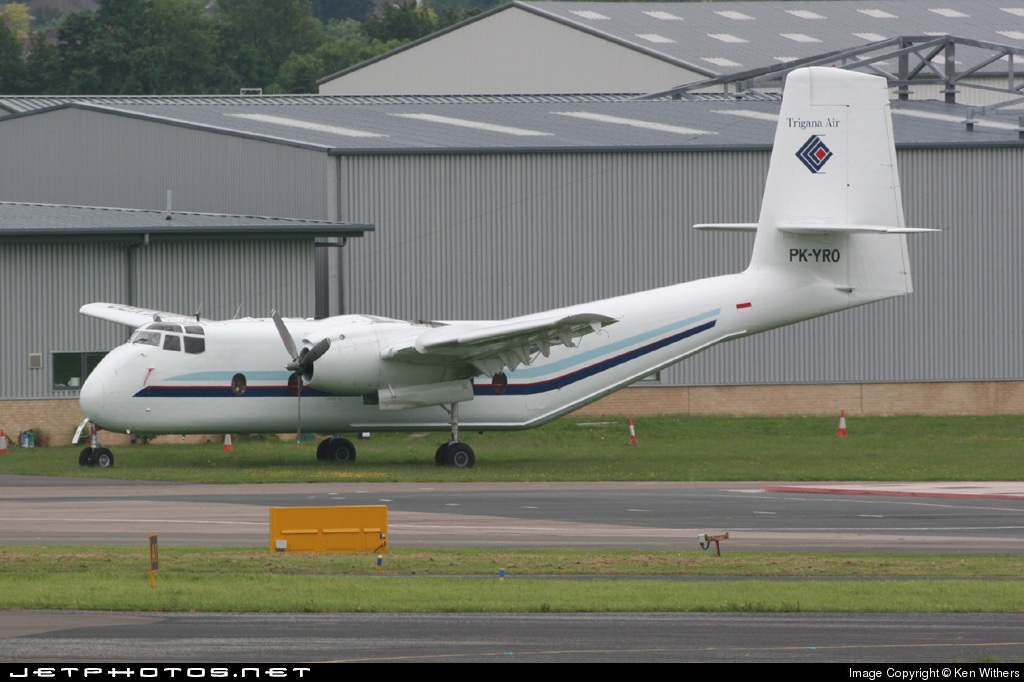
Crash of a De Havilland DHC-4 Caribou in Port Alsworth
Date & Time:
Aug 29, 2001 at 1900 LT
Registration:
N2225C
Survivors:
Yes
Schedule:
Iliamna - Port Alsworth
MSN:
215
YOM:
1964
Crew on board:
2
Crew fatalities:
Pax on board:
0
Pax fatalities:
Other fatalities:
Total fatalities:
0
Captain / Total hours on type:
559.00
Circumstances:
The captain and the first officer were landing a short takeoff and landing (STOL) cargo airplane on a private, dirt and gravel surface runway. The airplane was configured for landing with 40 degrees of flaps. During the landing approach, variations in indicated airspeed and ground speed indicated windshear conditions. About 100 to 200 feet above the ground, the airplane encountered a downdraft and began to drift to the right of the runway centerline. The captain said she increased engine power and applied full left aileron and rudder, but could not gain directional or pitch control of the airplane. The right wing struck trees, short of the runway threshold, increasing the airplane's right yaw. The captain said that as the airplane neared the ground, she pulled the engine throttles off. The airplane struck the ground with the right main landing gear and right front portion of the fuselage. The airplane then pivoted to the right, 180 degrees from the approach heading. The owner of the airport reported that wind conditions from the east may produce downdrafts in the area of runway 05. He indicated that at the time of the accident, the wind was blowing from the east about 15 knots. The first officer reported the captain appeared to be attempting to maintain a stabilized approach angle by varying the pitch attitude of the airplane. A review of company training literature revealed that the airplane is especially sensitive to slight wind shear, and wind gusts as low as 5 knots when operating at low airspeeds. Pilots are cautioned that when flying the aircraft at low speeds, a large application of the aileron control may be required to maintain wings level. During gusty wind conditions, the threshold airspeed should be increased by one-half the gust factor, and any lateral displacement should be corrected rapidly. If a wing is allowed to drop beyond corrective action of full aileron, power should be increased immediately to regain level flight.
Probable cause:
The captain's failure to maintain the proper glidepath, and improper short field landing procedures. Factors in the accident were a downdraft, and the captain's inadequate evaluation of the weather conditions.
Final Report:
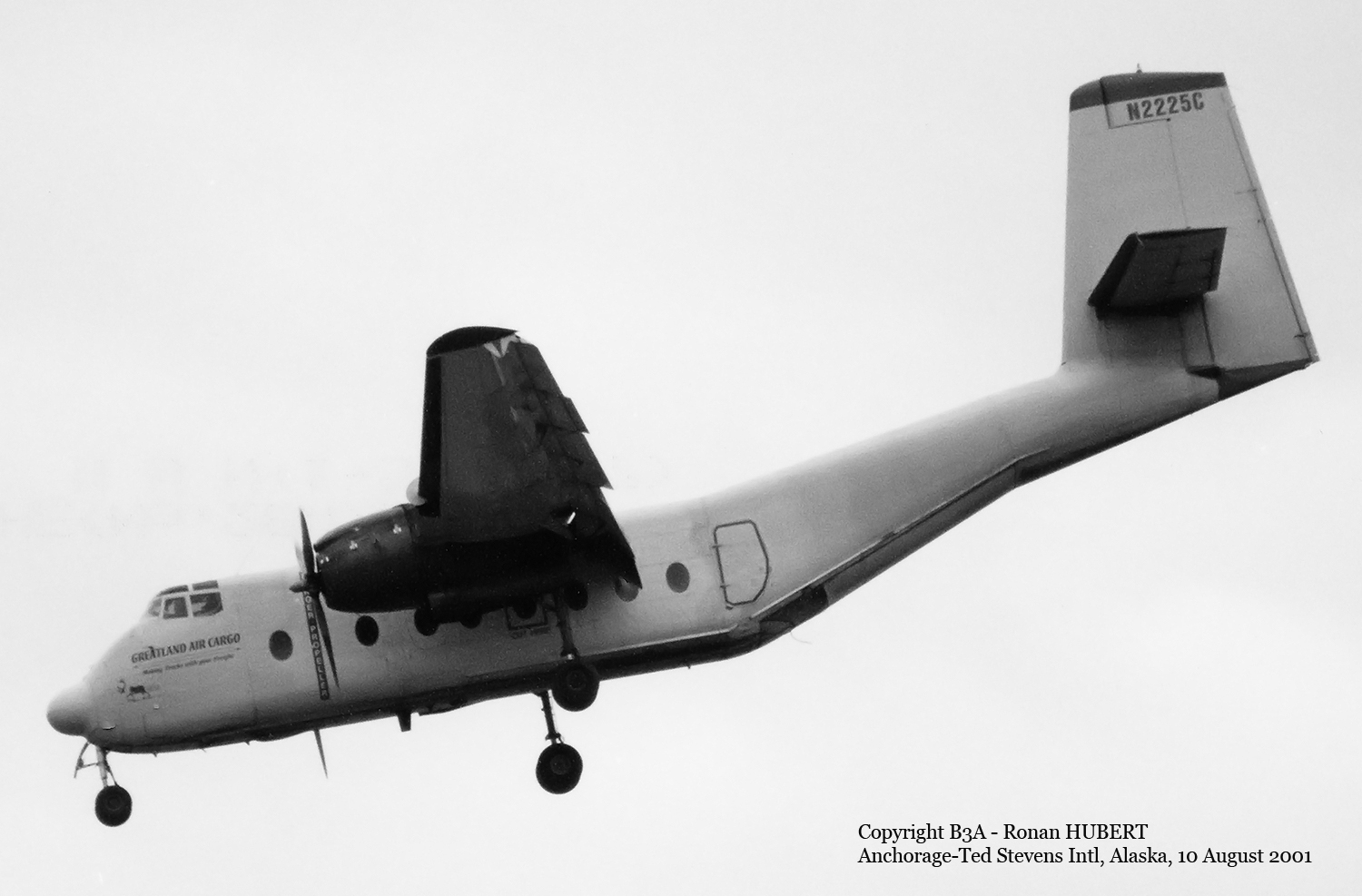
Crash of a De Havilland DHC-4 Caribou in Kuching: 5 killed
Date & Time:
May 24, 1999 at 1315 LT
Registration:
M21-05
Survivors:
No
Schedule:
Kuching - Kuching
MSN:
270
YOM:
1969
Crew on board:
5
Crew fatalities:
Pax on board:
0
Pax fatalities:
Other fatalities:
Total fatalities:
5
Circumstances:
The crew was completing a local training flight at Kuching Airport. On final approach, one of the engine failed. The aircraft lost height and crashed in a swampy area near the airport. All five occupants were killed.
Probable cause:
Engine failure for unknown reasons.
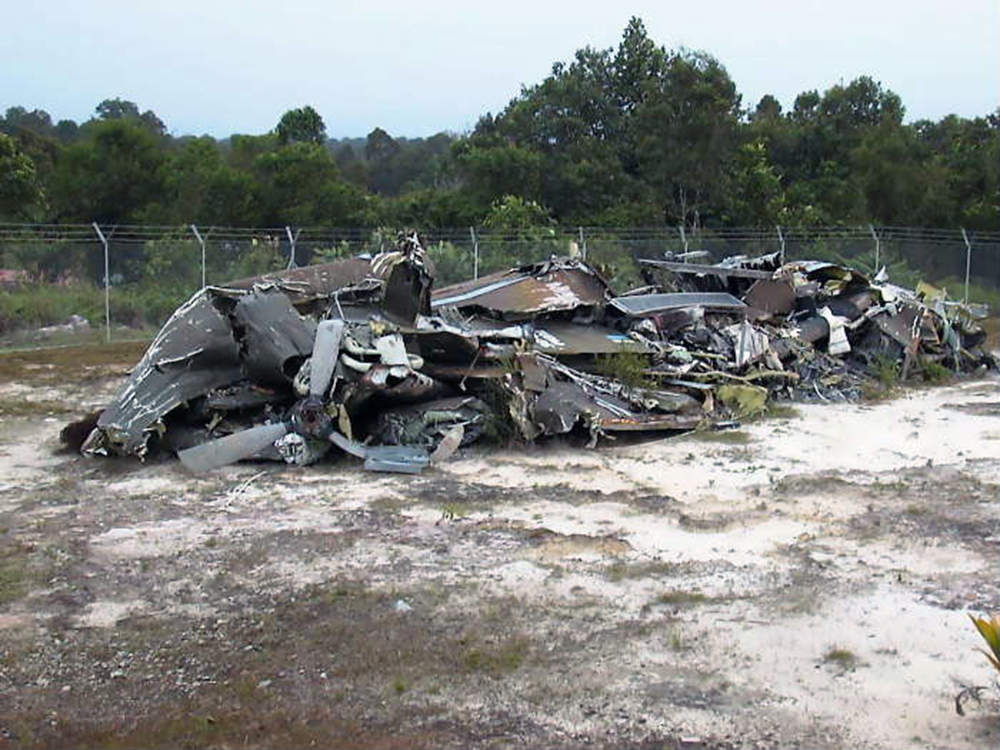
Crash of a De Havilland DHC-4A Caribou in Sparrevohn: 1 killed
Date & Time:
Jan 29, 1997 at 2310 LT
Registration:
N702SC
Survivors:
Yes
Schedule:
Saint Mary's - Kenai
MSN:
126
YOM:
1963
Crew on board:
2
Crew fatalities:
Pax on board:
0
Pax fatalities:
Other fatalities:
Total fatalities:
1
Captain / Total hours on type:
220.00
Aircraft flight hours:
13923
Circumstances:
The CFR Part 135 cargo flight departed at night on an IFR flight with a load of mining equipment. Route of flight was over remote/mountainous terrain. About 2 hours after takeoff, while cruising at 12,000' feet msl, the right engine and propeller began to overspeed. The captain feathered the #2 engine and declared an emergency. He began to divert to an alternate destination, about 120 miles away in an area of lower terrain, but the aircraft would not maintain altitude (single engine service ceiling, as loaded, was about 8,700 feet). The captain increased power to the left engine, but it began to produce banging and coughing noises. The captain elected to perform an emergency landing at a nearby, remote, military airfield (A/F). The A/F was located in mountainous terrain and had a one-way, daylight only approach. The captain lowered the gear and flaps, and began a visual approach while attempting to keep the runway end identifier lights (REIL) in view. The aircraft encountered severe turbulence, and the captain applied full throttle to the left engine in an attempt to climb. The REIL disappeared from view, and the aircraft collided with snow covered terrain about 2 miles west of the A/F. Ground personnel at the A/F reported high winds and blowing snow with limited visibility. Postcrash exam of the right engine revealed a loss of the propeller control system hydraulic oil. Flight at 12,000 feet was conducted without crew oxygen. The crew had exceeded their maximum allowable duty day without adequate crew rest.
Probable cause:
Loss of the right engine propeller control oil, which led to an overspeed of the right engine and propeller, and necessitated a shut-down of the right engine; and failure of the pilot to maintain adequate altitude/distance from terrain during visual approach for a precautionary landing at an alternate airport. Factors relating to the accident were: fluctuation of the left engine power, premature lowering of the airplane flaps, and an encounter with adverse weather conditions (including high winds, severe turbulence, and white-out conditions) during the approach.
Final Report:
Crash of a De Havilland DHC-4A Caribou in New Stuyahok
Date & Time:
Aug 2, 1996 at 1100 LT
Registration:
N800NC
Survivors:
Yes
Schedule:
Anchorage - New Stuyahok
MSN:
98
YOM:
1963
Crew on board:
2
Crew fatalities:
Pax on board:
0
Pax fatalities:
Other fatalities:
Total fatalities:
0
Captain / Total hours on type:
850.00
Aircraft flight hours:
14638
Circumstances:
The airplane's nose gear collapsed during a landing roll on a gravel airstrip. Subsequent examination of the nose gear locking mechanism disclosed a failed hydraulic drag strut locking actuator.
Probable cause:
The collapse of the nose gear precipitated by the failure of the hydraulic nose gear drag strut locking actuator.
Final Report:
